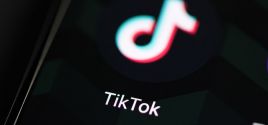Homeland Security Tries New 3-D Technology At Super Bowl XLWTAEFeb. 03, 2006 |
Popular 
Mike Johnson Pushes Debunked Lie That Israeli Babies Were 'Cooked in Ovens' On October 7

'It Has to Be Stopped': Netanyahu Demands Pro-Palestine Protests at U.S. Colleges Be Shut Down

'These Protesters Belong in Jail': Gov. Abbott Cheers Arrest of Pro-Palestine Protesters at UT Austin

Claim Jewish Student Was 'Stabbed In The Eye' by Pro-Palestine Protester Draws Mockery After Video Released

'We Aren't Going Anywhere': TikTok CEO Vows to Fight TikTok Ban in Court
 Hidden from public view at Super Bowl XL, live-action 3-D holograms created from signals streaming in from networks of electronic eyes will help Homeland Security Agency officials detect people and objects suspected of endangering the 65 thousand ticket holders crowding into Ford Field, and the thousands more celebrating in downtown Detroit. While officials may not go public with the details, the surveillance effort is likely to include: -- scanning undersides of vehicles for suspicious objects -- face-in-the-crowd recognition and feature-matching -- monitoring street-level festivities, day and night -- underwater Detroit River monitoring -- classified methods of searching for and detecting potential threats. Viewing 3-D holographic displays hidden in a security van, security officials will, for the first time ever, view three-dimensional holography that can reveal shadows, angles, depths and details unseen by conventional imaging. Super Bowl XL marks the first public security use of this new technology, LifeVision3D(TM), from privately held Intrepid Defense & Security Systems, Birmingham, Michigan. Intrepid's CEO James Fischbach says his LifeVision3D(TM) system produces "true, live-action 3-D. No funny eyeglasses. No 'virtual reality' goggles. Instead, the action appears to move out from the surface of the screen and envelop the viewer." Mark A. Hammond, Deputy Director, Wayne County Department of Homeland Security and Emergency Management, believes this technology "should be considered a 'must have' for every agency and company with protection responsibilities." After over a decade in development, LifeVision3D now is ready for production and sale. "Opportunities are opening up with government agencies, the military, entertainment, medicine, and just about everyplace where people are starting to appreciate what they can accomplish with live-action 3-D holography," Fischbach says. What's ahead? Intrepid's successful development of live-action three- dimensional full color holography promises to leap ahead of current technologies for: -- Color night vision -- Revealing details of ground images from satellites -- Lifelike flight-training simulation -- Arcade video games -- Making education exciting -- Space exploration -- Underwater surveillance, threat assessment, exploration and recovery -- Remotely controlled precision surgery (already demonstrated at Detroit's Henry Ford Hospital). |



